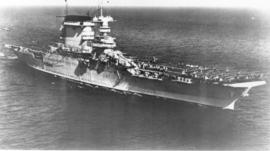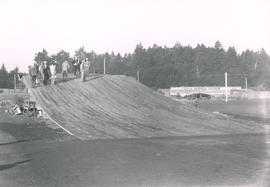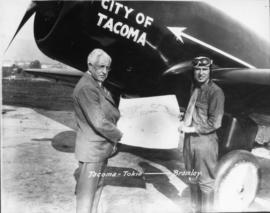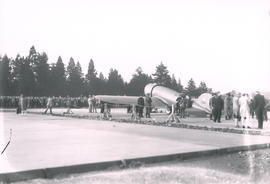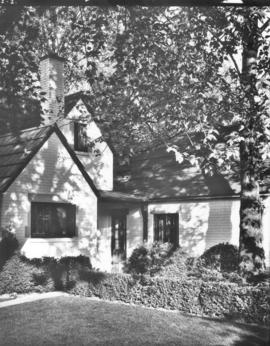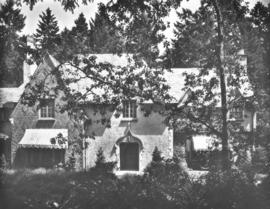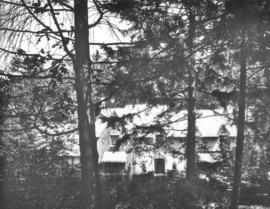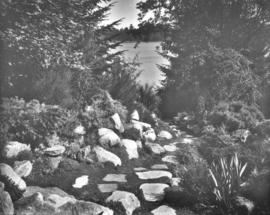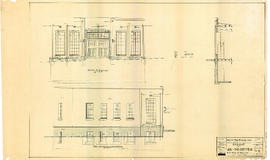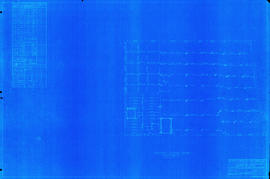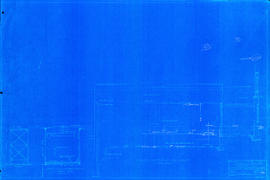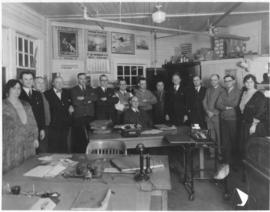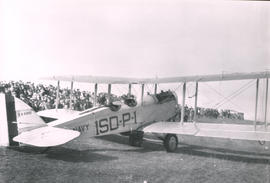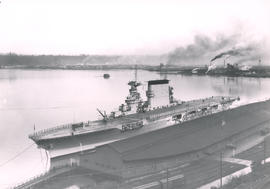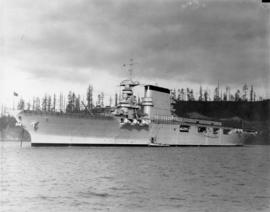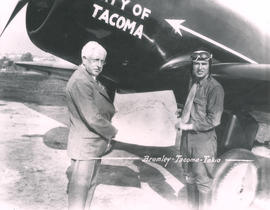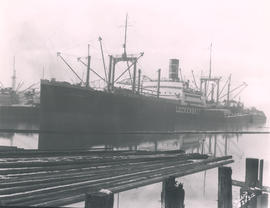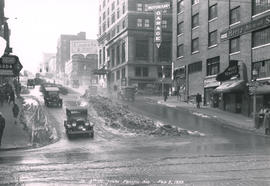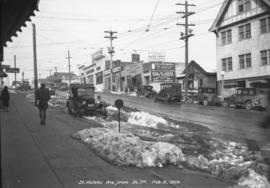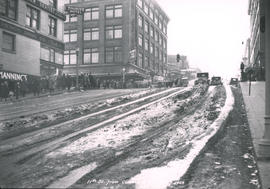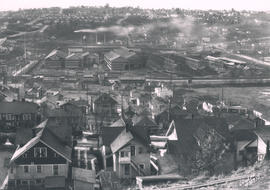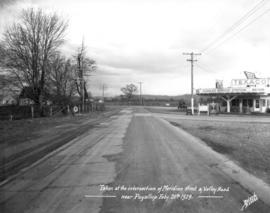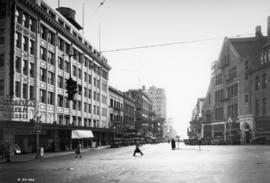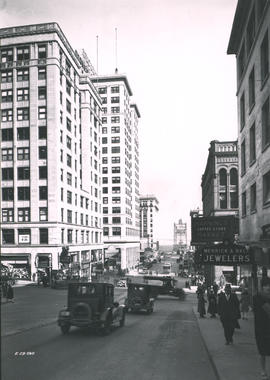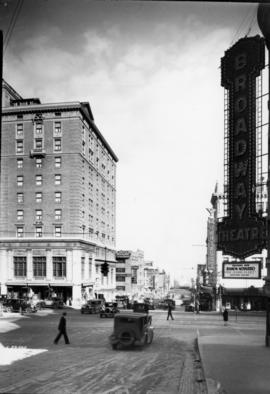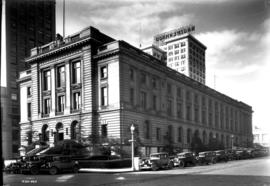ca. 1929. Harold Bromley, on the right, and a second man, probably his benefactor John Buffelen, stand next to Bromley's Lockheed Vega monoplane, the "City of Tacoma." Between them they hold a map on which has been drawn the course that Bromley intended to fly, non-stop from Tacoma to Tokyo, a continuous trip of 4,700 miles. Buffelen and a group of Tacoma businessmen had funded the design and manufacture of the Lockheed plane, hoping to make Tacoma as famous as Lindbergh's "Spirit of St. Louis." The plan ended in disaster. The first plane crashed on take off in front of a crowd of 25,000 at the Tacoma Field. The second and third planes crashed during test flights, the third crash killing test pilot H. W. Catling. The fourth plane was manufactured by Emsco; the plan adjusted to fly from Tokyo to Tacoma, taking advantage of tail winds. It flew for 24 hours, before exhaust fumes forced Bromley and co pilot and navigator Harold Gatty to return to Japan. The plane was stored in a Japanese hangar and the Tacoma money men were stopped by the Depression from ever funding another attempt at the record.
Bromley, Harold; Airplanes--Tacoma--1920-1930; Aeronautics--Tacoma--1920-1930;
